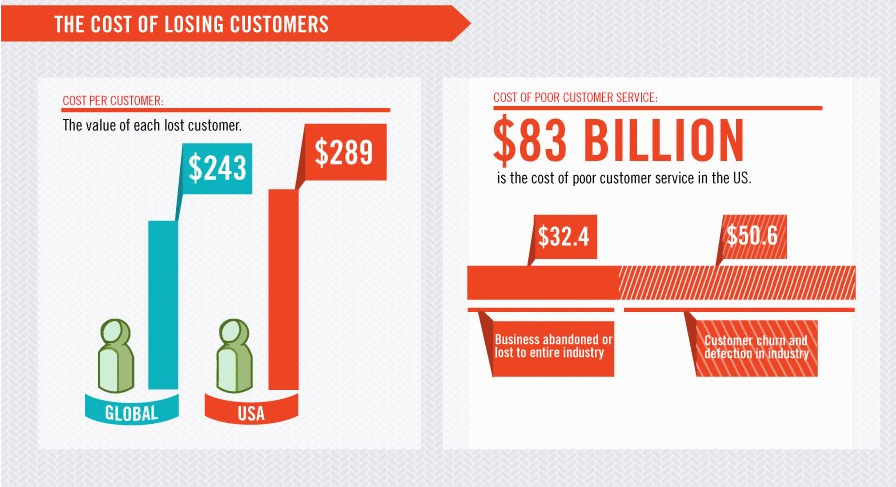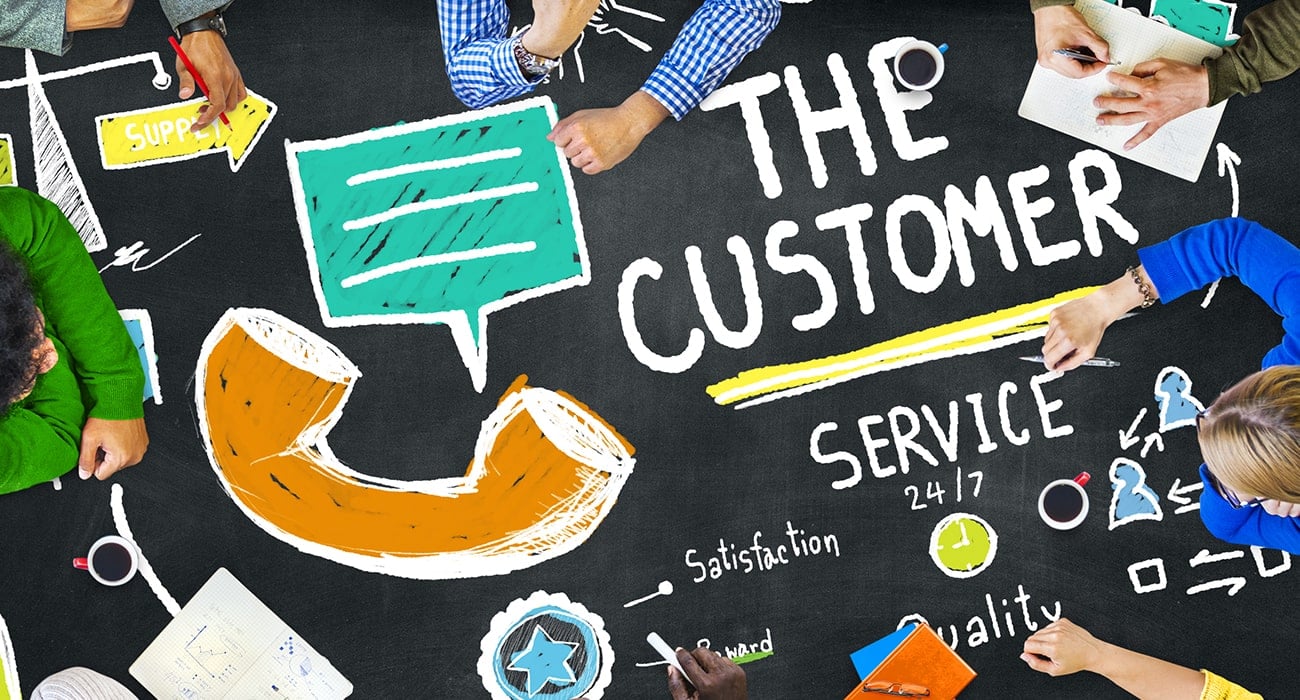Just starting out in e-commerce? With borderless economies, endless innovations such as personalization, chatbots and all things AI, an online business can get bigger overnight—whether you’re prepared for it or not.
On the bright side, building an e-commerce business is like the old saying, “one thorn of experience is worth a whole wilderness of warning.” In other words, for all online sellers, navigating the unknown will always be about gaining experience and establishing processes to manage your customers globally.
Plus, trial and error is the way forward for learning about customer experience—but remember, too much error can cost you. Businesses lost roughly $83 billion because of poor customer service in the U.S. in 2017 and it’s the little things that can make a huge difference for people.
We spoke to some e-commerce businesses and experts about their thoughts on customer service now compared to when they first set up their online stores.
1. Empowering customer service agents
Hiring talented customer service agents is not enough to produce good results. Great leadership, teamwork and exceptional knowledge are needed to paint the whole picture.
In the beginning, the above combination of skills can be tough for teams to establish, but what’s the best way to approach it? Customer experience expert Adam Toporek explains how he was faced with the same dilemma:
«When I began my first retail business many years back, I came into it with a command and control mindset, a legacy of the business school and entrepreneurial thinking of the era I learned in. Control was the game—and often at the expense of both customer and employee experience.
After wasting staff time, upsetting customers and generally adding stress to everyone’s life for small dollar refunds and other minor issues, it didn’t take long for me to realize that giving employees the authority to solve customer issues in real time was one of the most powerful single levers one can pull to improve customer experience and employee experience.”
Adam Toporek, president of CTS Services Solutions
By empowering his employees with his knowledge, Adam was not only improving overall customer experience, he was also increasing productivity in the workplace. With more information, the faster and more efficient the employees become at their job.
2. Understanding wider customer service trends
On any given day, customer support agents deal with a variety of issues. Working with customer support software, it’s easy to notice when trends in customer queries start to develop for different clients.
The same applies everywhere. These trends play a vital role in the bigger picture of the company and allow decision-makers to develop strategies accordingly.
This is where the customer support team comes in. If a recurring problem continues, it’s something that should be reviewed further internally, instead of becoming the next FAQ on your website. Customer experience expert Jeremy Watkin reiterates this when he draws on his own past:
“What separates the great customer service professionals from the good ones is their ability to step back and see the bigger trends that are occurring in the customer experience. Are there bigger issues at work with our policies, product or the way we’re serving that, if fixed, would vastly improve the customer experience for not just one customer at a time, but many? I wish I had known that from day one, but knowing it now makes me a better customer experience leader.”
Jeremy Watkin, director of customer experience at FCR
Not only do you increase the happiness of your customers in this way, but you’re also improving the quality of your offering.
3. Organization is essential
Organizing your customer service strategies is easier said than done and, frankly, something that can be misconstrued. Keeping on top of customer service can be anything from managing support tickets, knowing which marketplaces they come from or dividing this work among a team of agents.
“Before we started using xSellco, we had many emails and notifications coming into Outlook from various different platforms and had to flick between various screens just to try and keep up. Every email thread is there for each user to see and pre-worded templated replies for the most common questions make replying really fast. Negative feedback and social media notifications also come into the system directly, which means we have everything ‘customer service’ highly organized and all in one place and it saves so much time.”
Russell Scheef, alloutdoor.co.uk, fine quality outdoor equipment and camping gear
Similarly, Ian Lucas of Betterlife, a leading UK mobility and independent living company, agrees that the organizational aspect of using a software platform than not has helped them a lot:
“When we first started with our eDesk account the customer support was first class. I have dealt with many companies that offer support after purchase, but eDesk is the first one that’s gone the extra mile. It is brilliant how we can manage our marketplace customer services from one place, help measure our team’s performance and keep to different marketplace SLAs.”
4. Always have an answer
One of the biggest problems with customer service is when you come across agents who sound like they’re reading from a script. While this approach works when there’s an answer for all issues, it often comes across as a “computer says no” mentality where you only answer within the capacity of your script, but nothing else. FreestyleXtreme has mastered its customer experience with the art of multitasking:
“Things always seem scary when you start. You have to become a master of multitasking! Our view is that there is nothing you can’t understand and that if things seem confusing, you can pick up a couple of books, research online or ask questions in forums.”
Ben Richardson, founder and customer experience director, FreestyleXtreme
5. The personal touch is key
CamMi Pham recently revealed ways to improve ecommerce personalization beyond targeted emails—something that Simpletire discovered could encourage a better customer experience.
As Director of Marketing Kevin Parcell shared:
“We’ve recently implemented a customer feedback strategy that helps identify any areas for improvement. Customers that had recently purchased from SimpleTire receive a personalized email from the CEO thanking them for their business and inquiring about their overall experience.
As a result, we continue to receive high response rates with truly insightful feedback, which we’ve implemented to improve certain aspects of the business and overall customer satisfaction. This method not only empowers customers and makes them feel valued, but has proved to be an easy and effective way to create authentic customer relationships.”
6. Focus on retention, not acquisition
According to research carried out by Invesp, the first goal of every business should be to focus on customer retention, especially because acquiring new customers can cost seven times more than holding onto current ones.

With years of experience of working as an online seller, Phil Masiello now puts customer retention top of his priority list:
“Retention of your customers is the key to any business but especially e-commerce business. Retention is a business practice that is rooted in excellent customer service. I learned at 800razors.com that the telephone was my best retention tool. I would call five customers each week. Good customers, customers who did not like us or customers who had a bad experience and I would ask them three simple questions.
What did you like about buying from us, what did you not like and what would you like to see us do better? And then I would sit back and listen. Not only did this practice get us some great virality because people would post that we took the time to call them and listen to them, but we also won back some customers who vowed never to shop with us again because of a poor experience. We may live in a digital world, but we are still in a people business.”
Phil Masiello, Founder & CEO Hound Dog Digital Marketing Agency
Regardless of what new technologies are thrown at customer service teams, the basics still apply: create a great experience from the very start.
eDesk is the leading helpdesk for online sellers, purpose-built to address the precise demands of eCommerce. Sign up for a no-hassle, 14-day free trial right now.




